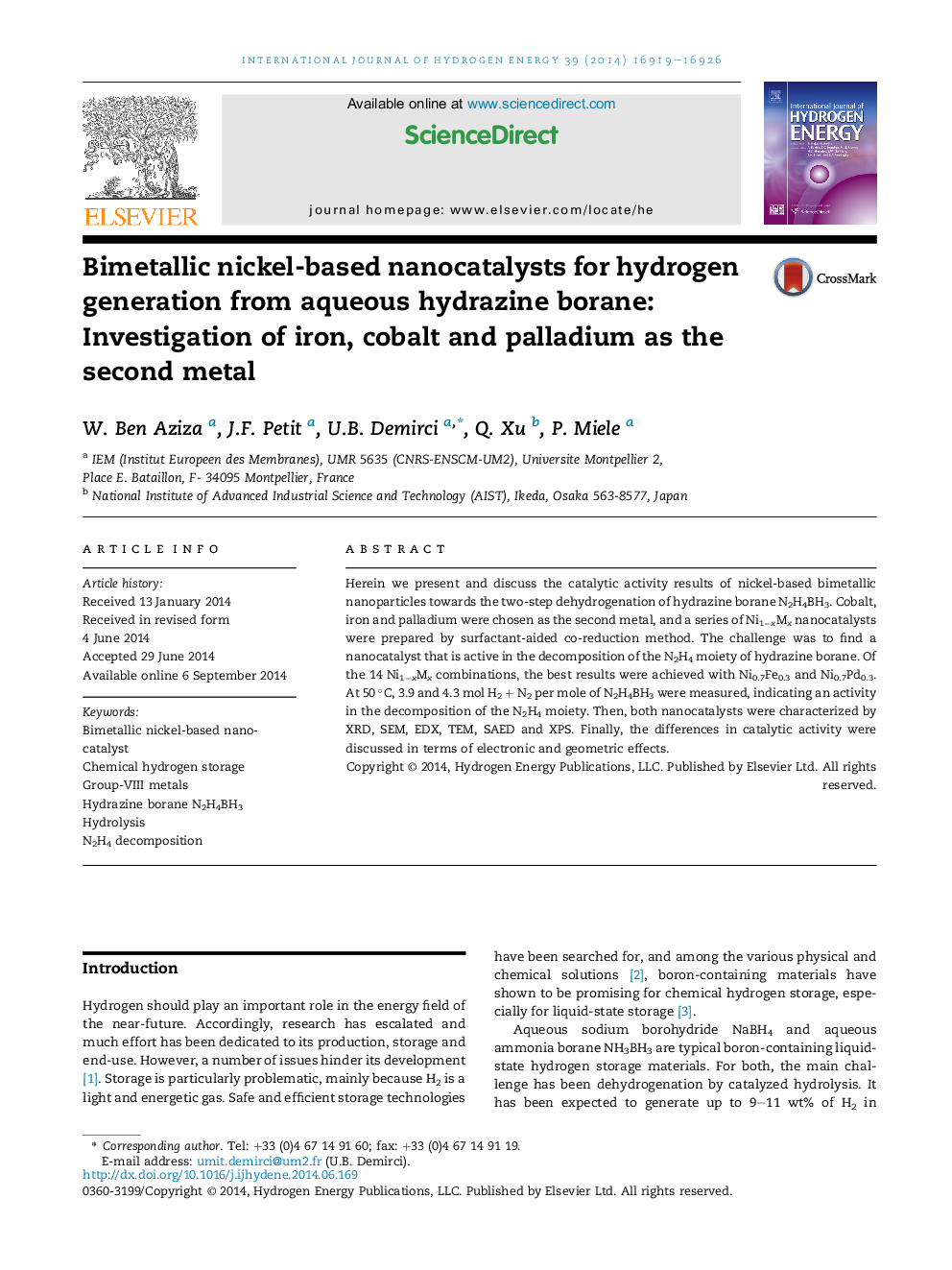| کد مقاله | کد نشریه | سال انتشار | مقاله انگلیسی | نسخه تمام متن |
|---|---|---|---|---|
| 1272148 | 1497479 | 2014 | 8 صفحه PDF | دانلود رایگان |
• Co, Fe and Pd are used as the 2nd metal of bimetallic Ni1-xMx nanocatalysts.
• Their activity towards the N2H4 moiety of N2H4BH3 (aq.) is especially considered.
• Ni0.7Fe0.3 and Ni0.7Pd0.3 are active in the decomposition of N2H4 at 50 °C.
• Alloying Ni with a noble metal is the best strategy to get active nanocatalysts.
• Electronic effects are proposed to explain the better activity of Ni0.7Pd0.3.
Herein we present and discuss the catalytic activity results of nickel-based bimetallic nanoparticles towards the two-step dehydrogenation of hydrazine borane N2H4BH3. Cobalt, iron and palladium were chosen as the second metal, and a series of Ni1−xMx nanocatalysts were prepared by surfactant-aided co-reduction method. The challenge was to find a nanocatalyst that is active in the decomposition of the N2H4 moiety of hydrazine borane. Of the 14 Ni1−xMx combinations, the best results were achieved with Ni0.7Fe0.3 and Ni0.7Pd0.3. At 50 °C, 3.9 and 4.3 mol H2 + N2 per mole of N2H4BH3 were measured, indicating an activity in the decomposition of the N2H4 moiety. Then, both nanocatalysts were characterized by XRD, SEM, EDX, TEM, SAED and XPS. Finally, the differences in catalytic activity were discussed in terms of electronic and geometric effects.
Figure optionsDownload as PowerPoint slide
Journal: International Journal of Hydrogen Energy - Volume 39, Issue 30, 13 October 2014, Pages 16919–16926
